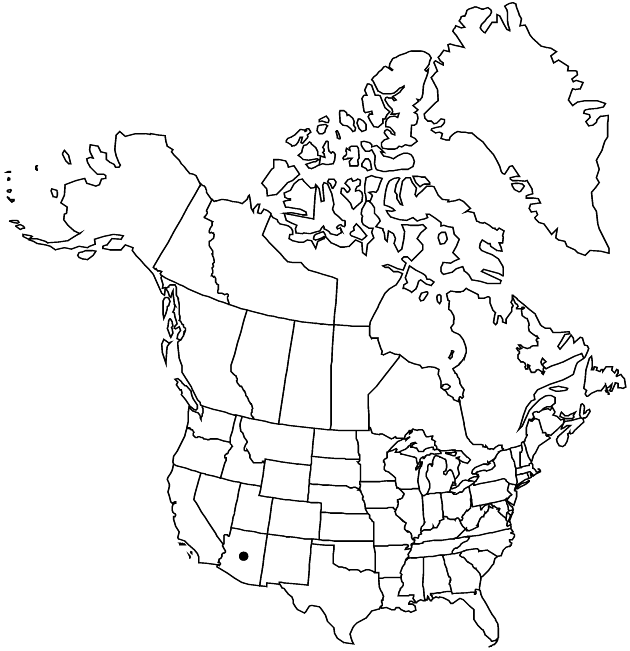Heterotheca marginata
Rev. Heterotheca Pyllotheca, 83, fig. 20. 1996.
Perennials, 38–80 cm, herbage abundantly long-hirsute; taprooted. Stems 1–40, ascending to erect (sometimes reddish-brown proximally, brittle), sometimes arching, hispido-scabrous (axillary leaf fascicles often present). Leaves: cauline stiff; proximal petiolate, blades oblanceolate, (180–) 240–550 × 4–7 (–9) mm, bases convex-cuneate, margins entire, strigoso-ciliate, with many long-hispido-strigose cilia all along, apices acute, mucronate, faces sparsely to moderately, coarsely hispido-scabrous, sparsely stipitate-glandular; distal sessile, blades oblanceolate, 14–31 × 3.3–5.2 mm, reduced distally, apices acute. Heads 8–50 (–78), in open paniculiform arrays. Peduncles 12–29 mm, moderately to densely hispido-strigose, sparsely stipitate-glandular; bracts 0–3, linear-oblanceolate, usually greatly reduced, rarely leaflike and linear-oblanceolate, sparsely to moderately hispido-scabrous, sparsely stipitate-glandular. Involucres campanulate, 6.5–9 (–10) mm. Phyllaries in 4–5 series, narrowly triangular-lanceolate, unequal (outer lengths 1/5–1/4 inner), scarious, faces moderately strigose (larger hairs to 1 mm), eglandular to sparsely stipitate-glandular. Ray-florets 10–15; laminae 9–14.5 × 1-2.5 mm. Disc-florets (25–) 31–46 (–50); corollas barely ampliate, 4.5–7.5 mm, tubes and throats glabrate, lobes 0.4–0.9 mm, glabrous or glabrate (hairs 0.1–0.2–0.3 mm). Cypselae monomorphic, obconic, compressed, 1.5–3.2 mm, ribs 8–10 (sometimes brownish), faces moderately strigose; pappi off-white, outer of linear scales 0.5–1 mm, inner of 35–45 bristle 4.6–7.4 mm, longest acute to weakly clavate. 2n = 18, 36.
Phenology: Flowering (Feb–)Oct(–Nov).
Habitat: Gravelly soils and crevices in sandstone outcrops, roadside margins and banks, dry hillsides, desert grassland hillsides around streams, chaparral transition areas
Elevation: 600–900 m
Discussion
Of conservation concern.
Heterotheca marginata grows in the Superstition and Pinal mountains. It is characterized by its numerous, long, hispido-strigose hairs along the entire margins of its distal leaves and peduncle bracts. The hairs give the plants a light gray-green appearance from a distance. The leaves are stiff, unlike other taxa in the section. It is similar to H. fulcrata var. arizonica, which is more glandular and typically has narrowly ovate to lanceolate bracts subtending smaller heads, and H. fulcrata var. senilis, which can be similar in indument but typically has more ovate leaves and heads subtended by narrowly ovate to lanceolate bracts.
Selected References
None.
Lower Taxa
"[" is not declared as a valid unit of measurement for this property."]" is not declared as a valid unit of measurement for this property.
